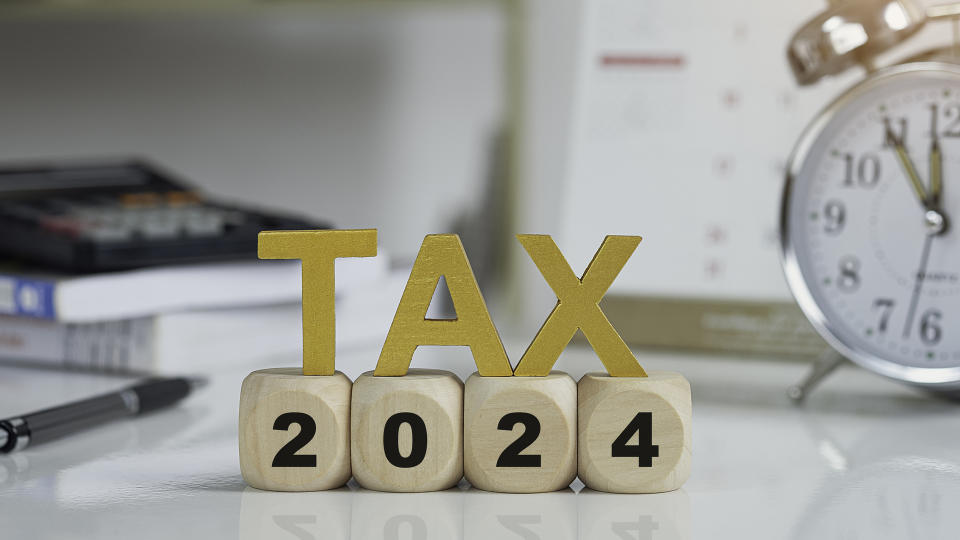5 Tax Deductions That Could Bring In an Extra $1,000 On This Year’s Tax Return

With Tax Day now in sight, the stragglers who still haven’t filed their returns should be looking for ways to reduce their taxable income and shrink the chunk of their earnings that they have to break off for the IRS.
If they do it right, they could keep hundreds of dollars for themselves that might have slipped away — or even more.
Check Out: IRS Increases Gift and Estate Tax Exempt Limits — Here’s How Much You Can Give Without Paying
Read Next: How To Get $340 Per Year in Cash Back on Gas and Other Things You Already Buy
“A few deductions or tax positions could add an extra $1,000 to this year’s return,” said Johan Garcia, CPA, owner and sole author of After Tax Cash and principal of JG CPA & Advisory.
The impact of every deduction and credit depends on variables like your income, tax bracket, number of dependents, filing status, etc. Work with a tax professional to maximize all available deductions, but start with these — they could mean the difference between four figures staying with you or going to the IRS.
Sponsored: Credit card debt keeping you up at night? Find out if you can reduce your debt with these 3 steps
IRA Contributions — You Have Until Tax Day To Max Yours Out
Your last day to contribute to an employer-based 401(k) for 2023 was Dec. 31, but if you have an individual retirement account, you can reduce the amount of income the IRS can touch through Tax Day.
“One area to look into is maximizing contributions to retirement accounts like a traditional IRA, which can reduce taxable income,” said Garcia. “The deadline is April 15.”
Discover More: Top 7 Countries with Zero Income Tax
The IRS allowed contributions of up to $6,500 for IRAs in 2023 or $7,500 for those 50 and older. You can contribute to Roth IRAs for 2023 through Tax Day, but as after-tax retirement accounts, contributions don’t offset your taxable income.
Although the 401(k)s deadline has passed for tax year 2023, employer-based plans offer much more write-off potential. You can contribute up to $23,000 in tax year 2024, so start building your nest egg and lowering next year’s tax bill today.
Home Office Deduction
If you work from home, your home itself could keep your money out of the IRS’s hands.
“Another area for business owners or work-related expenses could be the home office deduction, where you can claim tax deductions for costs associated with a home office,” said Garcia.
Your business activities and the space in your home must meet the IRS’s standards to qualify. If they do, you can deduct them according to square footage and write off expenses like insurance, depreciation, rent, mortgage interest, repairs and utilities.
With the rise of remote work and side hustles, the home office deduction has become one of the most valuable yet most often overlooked ways to reduce taxable income.
Self-Employment Tax Deduction
Garcia mentioned “employee unreimbursed expenses for costs incurred associated with employment and not reimbursed,” which used to let employees write off work-related expenses that their bosses didn’t pay them back for — travel, supplies, work clothing, etc. The 2017 Tax Cuts and Jobs Act eliminated that deduction, but only for wage earners.
Self-employed individuals can still write off one of the biggest expenses they incur and one that prevents many people from becoming sole proprietors — the self-employment tax.
A 15.3% payroll tax funds Social Security (12.4%) and Medicare (2.9%). Wage earners and salaried employees contribute 6.2% and 1.45% of every paycheck to cover their half of entitlement funding. Their employers pay the same to cover the other half.
But the self-employed have to pay as both the boss and the worker, kicking in the entire 15.3% themselves. There’s no getting out of paying it, but if you work for yourself, you deduct half of the self-employment tax.
Earned Income Tax Credit
While it’s a credit and not a deduction, the EITC is one of the most versatile tax breaks because it applies to those with and without children — and it’s a refundable credit, which means you get to keep any that’s left over after it reduces your tax bill to zero.
“If you’re employed or self-employed and earned less than $63,698, you can use the Earned Income Tax Credit to save some money at tax time,” said former Wells Fargo financial advisor Jonathan Feniak, who oversees financial and tax strategies as general counsel and head of finance at Colorado-based LLC Attorney. “If you have no children, you can save a maximum of $600, while those with three or more children can earn a credit of up to $7,430.”
Child Tax Credit
The EITC is for low- and moderate-income households, but parents earning up to $200,000 a year — $400,000 for married couples filing jointly — can still cash in on the cost of raising children.
“If you’re over that income threshold for the year, you can claim a Child Tax Credit of up to $2,000 per child, with up to $1,500 refundable,” said Feniak.
Other deductions with the potential to give you back $1,000 include:
Student loan interest deduction
Charitable donation deduction
State and local tax deductions
HSA contribution deduction
Educator expenses deduction
More From GOBankingRates
I Was Retired, but Wasted Big Money On These 3 Things and Had To Go Back To Work
5 Reasons You Should Consider an Annuity For Your Retirement Savings
4 Reasons You Should Be Getting Your Paycheck Early, According to An Expert
This article originally appeared on GOBankingRates.com: 5 Tax Deductions That Could Bring In an Extra $1,000 On This Year’s Tax Return
